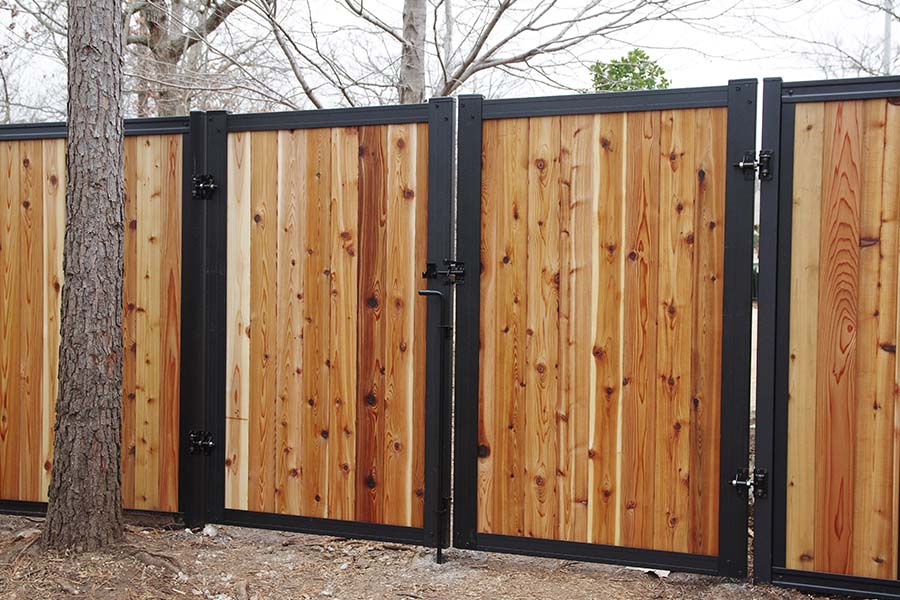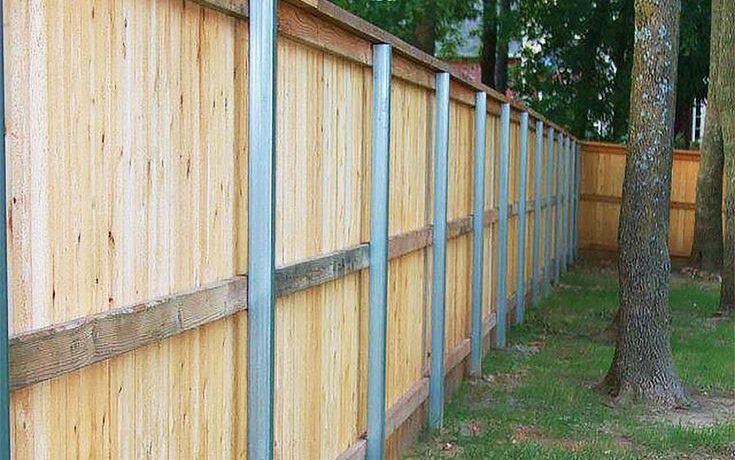All Categories
Featured

Whether it's solid winds, rain, snow, or intense warm, climate problems can gradually damage your fence, leading to pricey repair work or replacement. There are several actions you can take to safeguard your fencing from weather-related damages and prolong its lifespan.
- Select the Right Material. The kind of product your fencing is made from plays a substantial function in just how well it will stand up to weather. Some materials are naturally a lot more immune to damages than others. For instance:
Wood Fences: While classic and lovely, wood can be vulnerable to dampness, rot, and insects. However, pressure-treated wood or cedar can use much better resistance to these problems. Plastic Fencings: Vinyl is highly resistant to dampness, rot, and pests. It likewise stands well to harsh sunlight and hefty rain. Steel Fencings: Wrought iron or aluminum fencings are durable and can endure a selection of climate condition. They can, nevertheless, struggle with corrosion over time, particularly if not effectively coated. Composite Fences: Made from a mix of timber fibers and plastic, composite fences are more resistant to weather-related damage contrasted to conventional wood fencings. Picking the ideal material for your region's climate is the primary step in securing your fence from weather damages.
- Seal or Spot Wooden Fences. Wooden fences are especially vulnerable to harm from wetness, UV rays, and temperature level fluctuations. Among one of the most effective means to secure your timber fencing is by applying a protective sealant or tarnish. These items help:
Avoid Water Damages: Sealers develop a water-resistant barrier, preventing moisture from permeating into the timber and creating mildew, mold and mildew, or rot. Safeguard Versus UV Damages: A great tarnish or sealant will certainly also block harmful UV rays from the sun, which can trigger wood to dry out, fracture, and blemish gradually. Preserve the Fencing's Appearance: Normal discoloration assists maintain the natural charm of the timber and expands its life expectancy. It's suggested to reapply the stain or sealant every 1-- 2 years to keep your surround excellent condition.
- Set up an Obstacle for Wind Defense. Solid winds can cause significant damages to your fencing, specifically if it is tall or weak. Wind can bend or break wood panels, loosen up fencing posts, or perhaps create the entire fencing to collapse. Mounting a windbreak-- such as planting bushes, bushes, or installing a mesh obstacle-- can help secure your fence from high winds.
In addition, you can reinforce the posts with concrete or metal braces to provide additional security and stop changing or leaning.
- Trim Overhanging Branches. Falling branches can break panels or harm the fence posts, leading to costly repair services. Keeping the branches cut back reduces the danger of branches breaking off and causing damage to the fence.
- Regular Assessments and Upkeep. Doing regular upkeep and inspections is crucial to capturing potential issues prior to they escalate. After a heavy storm, examine your fencing for any kind of signs of damages, such as loose panels, leaning blog posts, or broken areas. Caring for tiny problems before they come to be bigger ones can help extend the life of your fencing.
Furthermore, cleaning your fencing regularly to eliminate dirt, particles, or mold can help maintain its look and honesty. For wooden fencings, delicately stress wash the surface to eliminate built-up grime, and for plastic fences, utilize a mild detergent to clean up any type of discolorations.

- Make Sure Appropriate Water Drainage. Water damages is one of the most usual weather-related problems that impact fences. Poor water drainage can lead to standing water around your fence articles, which can create the articles to rot or damage over time.
- Use a Protective Finishing to Steel Fences. Metal fencings, such as those made from iron or steel, are extremely sturdy but can be vulnerable to rust otherwise effectively preserved. Using a safety layer or paint that is particularly created for metal can help stop corrosion and corrosion. Make certain to examine the fence periodically for any signs of rust, and address it promptly by sanding and painting the affected areas.

Final thought. Your fence is a valuable financial investment, and protecting it from weather-related damages will aid make sure that it remains to offer its purpose for many years to find. By picking the appropriate materials, on a regular basis preserving your fencing, and taking actions to secure it from the elements, you can reduce weather-related damage and prolong its lifespan. Whether you're managing strong winds, heavy rainfall, or the extreme sun, these easy actions can go a lengthy means in protecting the condition and look of your fence, saving you money and time in the future.
Latest Posts
Experience Your Financial Partner at WyHy – Wyoming’s Best Banking Choice for Your Future
Published en
1 min read
Explore Your Financial Partner at WyHy – Top Benefits for Members
Published en
1 min read
Protect and Enhance Your Home with Weathercraft's House siding Providers
Published en
1 min read
More
Latest Posts
Experience Your Financial Partner at WyHy – Wyoming’s Best Banking Choice for Your Future
Published May 26, 25
1 min read
Explore Your Financial Partner at WyHy – Top Benefits for Members
Published May 25, 25
1 min read
Protect and Enhance Your Home with Weathercraft's House siding Providers
Published May 23, 25
1 min read